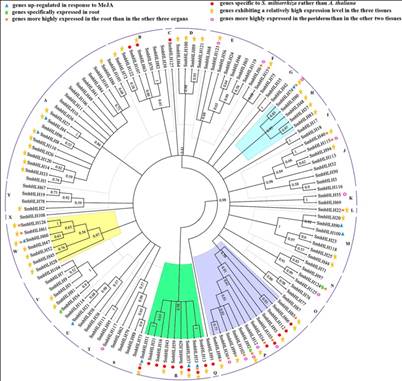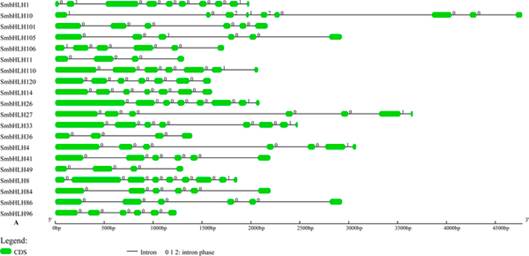灵芝仙草基因面纱揭开


灵芝是传统药物中的“四大仙草”之一。2日,记者从中国中医科学院获悉,教育部长江学者创新团队负责人陈士林领导的课题组完成了紫芝基因组精细图,该精细图含有12条染色体,序列总长度达到48.86兆碱基,编码大约1.5万个基因。相关研究成果已发表在自然出版集团旗下期刊《科学报道》上。
课题组研究表明,紫芝在生长发育中具有多种防御机制,包括基因组防御机制和化学防御机制,紫芝的化学防御功能可能受到多种基因调控机制影响。基因组防御对于维持物种遗传物质稳定性具有重要意义,而化学防御与其次生代谢产物的合成与调控具有密切关系。
此研究为通过比较基因组学研究灵芝次生代谢和生长发育,进而通过分子育种培育优良品种奠定了坚实的基础。据论文第一作者、中国中医科学院中药研究所朱英杰博士介绍,尽管赤芝和紫芝基因组具有较高相似性,但与次生代谢相关的骨架合成酶和修饰酶,在两者之间具有明显的差异,这可能是赤芝和紫芝次生代谢产物谱及其药学功效不同的遗传基础。
据悉,该研究团队曾率先完成染色体水平的赤芝基因组精细图解析并提出灵芝为药用模式物种,文章发表在《自然通讯》上,并被自然网站选为中国最佳研究。灵芝基因组图谱的公布为开展灵芝三萜等有效成分的合成研究提供了便利,随着这些合成途径的逐步解析,使得通过合成生物学合成灵芝有效成分成为可能。同时,对灵芝生长发育和抗病抗逆关键基因的发掘和认知,将推动灵芝的基因组辅助育种研究,加速灵芝新品种的培育,并为灵芝的科学栽培和采收提供理论指导。(来源:科技日报 杨朝晖)
Genome-wide characterisation and analysis of bHLH transcription factors related to tanshinone biosynthesis in Salvia miltiorrhiza
Abstract Salvia miltiorrhiza Bunge (Labiatae) is an emerging model plant for traditional medicine, and tanshinones are among the pharmacologically active constituents of this plant. Although extensive chemical and pharmaceutical studies of these compounds have been performed, studies on the basic helix-loop-helix (bHLH) transcription factors that regulate tanshinone biosynthesis are limited. In our study, 127 bHLH transcription factor genes were identified in the genome of S. miltiorrhiza, and phylogenetic analysis indicated that these SmbHLHs could be classified into 25 subfamilies. A total of 19 sequencing libraries were constructed for expression pattern analyses using RNA-Seq. Based on gene-specific expression patterns and up-regulated expression patterns in response to MeJA treatment, 7 bHLH genes were revealed as potentially involved in the regulation of tanshinone biosynthesis. Among them, the gene expression of SmbHLH37, SmbHLH74 and SmbHLH92 perfectly matches the accumulation pattern of tanshinone biosynthesis in S. miltiorrhiza. Our results provide a foundation for understanding the molecular basis and regulatory mechanisms of bHLH transcription factors in S. miltiorrhiza.
原文链接:http://www.nature.com/srep/2015/150715/srep11244/pdf/srep11244.pdf

